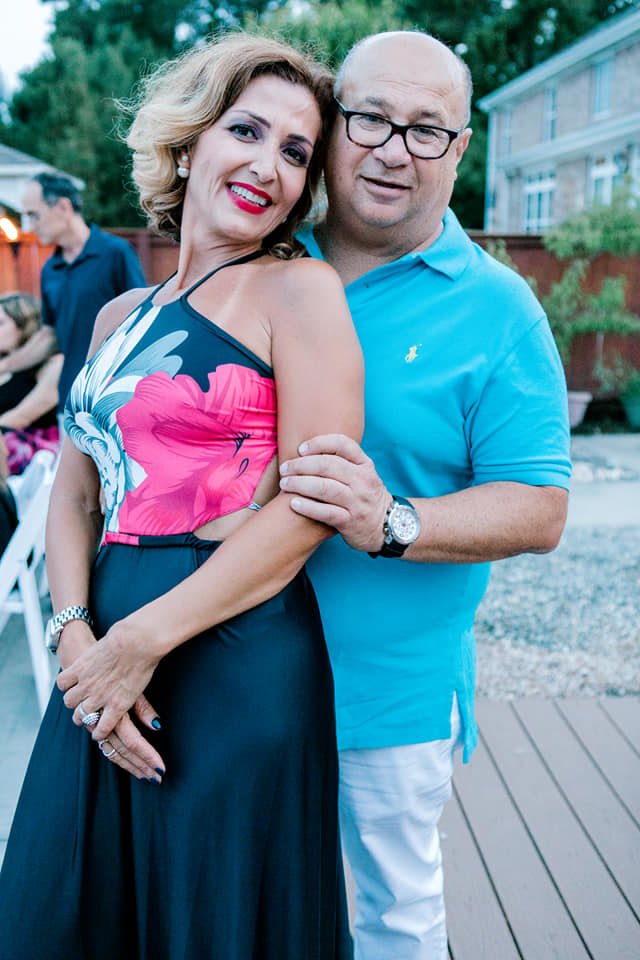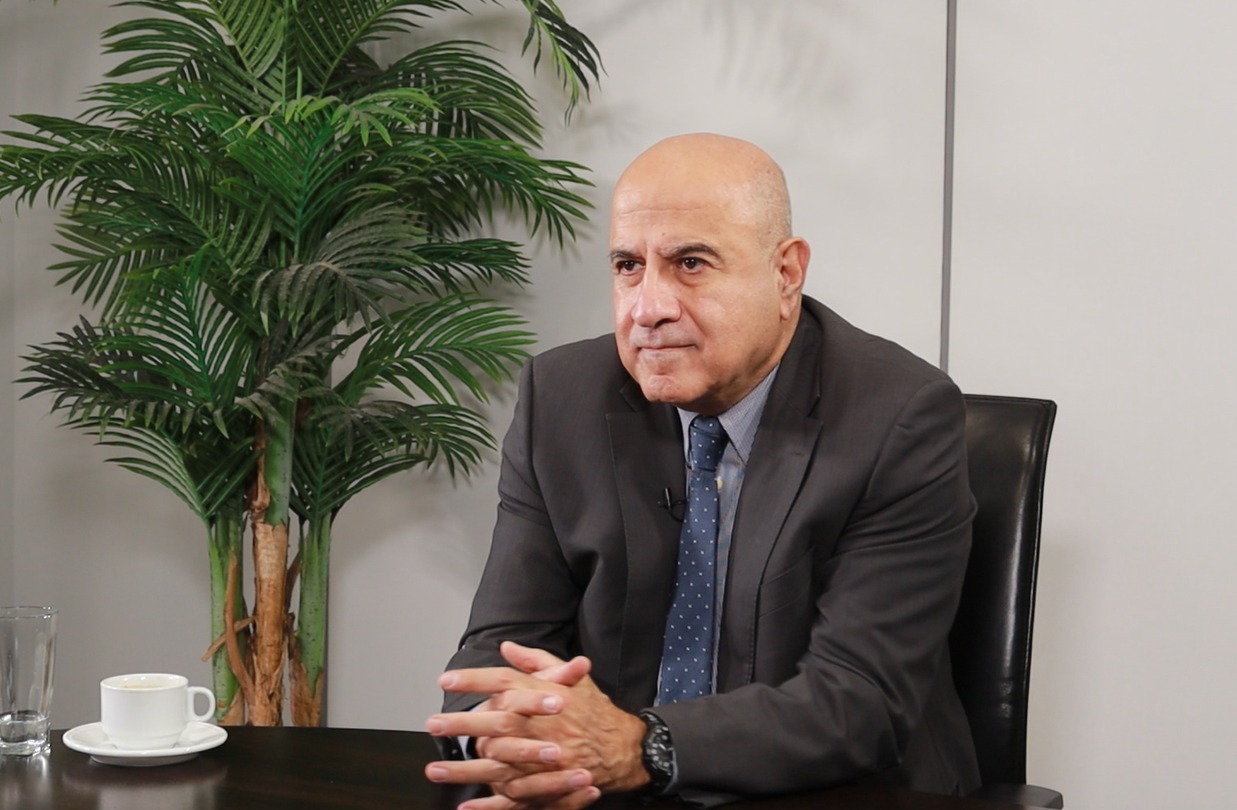متلازمة غيلان باريه: رحلة مرعبة عبر محنة زوجي
رولا كعدي/فيسبوك/06 آيار/2025
Guillain-Barré Syndrome: A Frightening Journey Through My Husband’s Ordeal
Roula Kehdy/Face Book/May 06/2025
It began quietly—almost insignificantly. On the night of February 22, 2025, around 11:00 p.m., my husband mentioned a tingling sensation in his toes and some weakness in his feet. We brushed it off. Maybe it was a pinched nerve, or just frostbite from the snow day we’d had. But by 3:00 a.m., things took a terrifying turn. He tried to get up to use the restroom—but couldn’t walk. I held him up, helped him, and tried to stay calm. Something wasn’t right.
That’s when I called Dr. Sandra Sabbagh, a trusted neuro-pediatrician and the person I always go to for medical insight. I described the symptoms. She didn’t hesitate—“Take him to the emergency room. Now.”
We rushed to the ER. Hours passed in a blur—CT scans, X-rays, countless tests. The ER doctor returned with a baffling answer: “Everything looks normal. But… we can’t discharge him. He still can’t walk.”Something deep in my gut said to keep pushing. So I called Dr. Sandra again. She told me, urgently, “Ask them to test for Guillain-Barré syndrome.”The ER doctor resisted. “He still has sensation,” she said dismissively.I repeated this to Dr. Sandra—and she exploded. “Tell her to check his reflexes—NOW.”
They did. And just like that, the puzzle started to come together: Guillain-Barré syndrome.I had never even heard of it. I Googled it on the spot—an autoimmune condition where the body attacks its own nerves and sometimes the lungs. The treatments: IVIG or plasma exchange. Five rounds. No cure—just support, time, and hope.
Dr. Sandra urged me to start IVIG immediately. It took three agonizing hours for the pharmacy to prepare it. By then, my husband couldn’t stand. The weakness was climbing up his body like a shadow. It all happened so fast it didn’t feel real.
He was admitted to the ICU. Within 48 hours, his arms stopped moving. We began plasma exchange therapy. But then his breathing started to fail.On February 28, they intubated him. Just before they placed the tube, he tried desperately to speak. His voice was gone. He couldn’t move. He couldn’t write. I’ll never forget that moment—his eyes locked on mine, pleading. I was breaking inside, but I sat there, holding his hand, pretending to be strong. He was fully conscious, trapped inside a body that had shut down.
The five weeks in the ICU felt like an eternity. I watched my husband endure pain, fear, and silence. I became his voice, his advocate, his strength—when I had none left.He couldn’t speak, but he would blink or squeeze my hand—his way of reminding me, I’m still here.
The support from family abroad—on the phone minute by minute—and from our friends (now family) was overwhelming and sacred.The ICU nurses were kind, compassionate, steady. But some doctors… they leaned on a neurologist I didn’t trust. She painted a bleak future: “He may never move again… he may never get off the trach.” Her words stripped hope from the air. I refused to believe her.
Then, the tide began to turn.
He was weaned off the ventilator. On March 10, they performed a tracheotomy. Two days later, they placed a voice valve.The moment he spoke again—just one word—he wept. So did I.Then, slowly, he began to move. First a finger. Then a hand. Then an arm.It was like witnessing a rebirth—inch by inch, breath by breath.
On April 3, we moved to a rehabilitation center. The transition was seamless. The therapists, nurses, and CNAs were extraordinary. They helped transform him from immobile to walking—with a walker, yes—but walking.
On April 29, we came home. We celebrated. Our family gathered around him. And now we begin the next phase: home health therapy, followed by outpatient rehab.
Recovery is not linear. Some days are hopeful; others are hard.But we’ve left the darkness of the unknown behind. Now we walk the long road ahead—together.
Guillain-Barré changed everything. It cracked us open.But from the brokenness emerged a deeper strength, a fiercer love, and an immense gratitude—for every small step, every breath, and every moment.
متلازمة غيلان باريه: رحلة مرعبة عبر محنة زوجي
رولا كعدي/فيسبوك/06 آيار/2025
(ترجمة بحرية من الإنكليزية بواسطة الياس بجاني)
بدأت الأمور بهدوء – بشكل شبه ضئيل. في ليلة 22 فبراير 2025، حوالي الساعة الحادية عشرة مساءً، ذكر زوجي شعورًا بالوخز في أصابع قدميه وبعض الضعف فيهما. تجاهلنا الأمر. ربما كان عصبًا منضغطًا، أو مجرد قضمة صقيع من يوم الثلج الذي مررنا به. ولكن بحلول الساعة الثالثة صباحًا، اتخذت الأمور منعطفًا مرعبًا. حاول النهوض لدخول الحمام – لكنه لم يستطع المشي. سندته، وساعدته، وحاولت أن أبقى هادئة. كان هناك شيء ما ليس على ما يرام.
حينها اتصلت بالدكتورة ساندرا صباغ، طبيبة أعصاب أطفال موثوقة والشخص الذي ألجأ إليه دائمًا للحصول على رؤى طبية. وصفت لها الأعراض. لم تتردد – “خذيه إلى غرفة الطوارئ. الآن.”
هرعنا إلى غرفة الطوارئ. مرت ساعات في ضبابية – صور مقطعية، وأشعة سينية، وعدد لا يحصى من الاختبارات. عاد طبيب الطوارئ بإجابة محيرة: “كل شيء يبدو طبيعيًا. ولكن… لا يمكننا تسريحه. لا يزال غير قادر على المشي.” شيء عميق في داخلي قال لي أن أستمر في الضغط. لذلك اتصلت بالدكتورة ساندرا مرة أخرى. قالت لي، بإلحاح: “اطلبي منهم إجراء اختبار لمتلازمة غيلان باريه.” قاوم طبيب الطوارئ. قالت باستخفاف: “لا يزال لديه إحساس.” كررت هذا للدكتورة ساندرا – فانفجرت. “اطلبي منها فحص ردود فعله – الآن.”
فعلوا ذلك. وهكذا، بدأت أجزاء اللغز تتجمع: متلازمة غيلان باريه. لم أسمع بها من قبل قط. بحثت عنها على جوجل على الفور – حالة مناعية ذاتية يهاجم فيها الجسم أعصابه، وأحيانًا الرئتين. العلاجات: الغلوبولين المناعي الوريدي أو تبادل البلازما. خمس جولات. لا يوجد علاج – فقط دعم، ووقت، وأمل.
حثتني الدكتورة ساندرا على البدء في العلاج بالغلوبولين المناعي الوريدي على الفور. استغرق الأمر ثلاث ساعات مؤلمة حتى يتمكن الصيدلي من تحضيره. بحلول ذلك الوقت، لم يستطع زوجي الوقوف. كان الضعف يتسلق جسده مثل ظل. حدث كل شيء بسرعة لدرجة أنه لم يبدُ حقيقيًا.
تم إدخاله إلى وحدة العناية المركزة. في غضون 48 ساعة، توقفت ذراعاه عن الحركة. بدأنا علاج تبادل البلازما. ولكن بعد ذلك بدأ تنفسه بالفشل. في 28 فبراير، قاموا بتنبيبه. قبل وضع الأنبوب مباشرة، حاول التحدث يائسًا. اختفى صوته. لم يستطع الحركة. لم يستطع الكتابة. لن أنسى تلك اللحظة أبدًا – كانت عيناه مثبتتين على عيني، تتوسلان. كنت أنهار من الداخل، لكنني جلست هناك، ممسكة بيده، متظاهرة بالقوة. كان واعيًا تمامًا، محاصرًا داخل جسد توقف عن العمل.
شعرت الأسابيع الخمسة في وحدة العناية المركزة وكأنها دهر. شاهدت زوجي يتحمل الألم والخوف والصمت. أصبحت صوته، ومدافعه، وقوته – عندما لم يكن لدي أي قوة متبقية. لم يستطع التحدث، لكنه كان يرمش أو يضغط على يدي – طريقته لتذكيري، “ما زلت هنا.”
كان الدعم من العائلة في الخارج – عبر الهاتف دقيقة بدقيقة – ومن أصدقائنا (الذين أصبحوا عائلة) هائلاً ومقدسًا. كانت ممرضات العناية المركزة لطيفات، ورحيمات، وثابتات. لكن بعض الأطباء… اعتمدوا على طبيبة أعصاب لم أثق بها. رسمت مستقبلًا قاتمًا: “قد لا يتحرك مرة أخرى… قد لا يتمكن من الاستغناء عن أنبوب التنفس.” كلماتها جردت الهواء من الأمل. رفضت أن أصدقها.
ثم، بدأ المد في التحول.
تم اخراجه عن جهاز التنفس الصناعي. في 10 مارس، أجروا له عملية فغر الرغامى. بعد يومين، وضعوا له صمامًا صوتيًا. في اللحظة التي تحدث فيها مرة أخرى – كلمة واحدة فقط – بكى. وبكيت أنا أيضًا. ثم، ببطء، بدأ يتحرك. أولاً إصبع. ثم يد. ثم ذراع. كان الأمر أشبه بمشاهدة ولادة جديدة – بوصة بوصة، نفسًا نفسًا.
في 3 أبريل، انتقلنا إلى مركز إعادة التأهيل. كان الانتقال سلسًا. كان المعالجون والممرضات ومساعدو التمريض استثنائيين. لقد ساعدوه في التحول من شخص غير قادر على الحركة إلى المشي – بعصا مشي، نعم – لكنه يمشي.
في 29 أبريل، عدنا إلى المنزل. احتفلنا. تجمعت عائلتنا حوله. والآن نبدأ المرحلة التالية: العلاج الطبيعي المنزلي، يليه إعادة التأهيل في العيادات الخارجية.
التعافي ليس خطيًا. بعض الأيام تبعث على الأمل؛ والبعض الآخر صعب. لكننا تركنا ظلام المجهول وراءنا. الآن نسير على الطريق الطويل أمامنا – معًا.
لقد غيرت متلازمة غيلان باريه كل شيء. لقد فتحتنا. ولكن من هذا الانكسار ظهرت قوة أعمق، وحب أشد، وامتنان هائل – لكل خطوة صغيرة، وكل نفس، وكل لحظة.






















